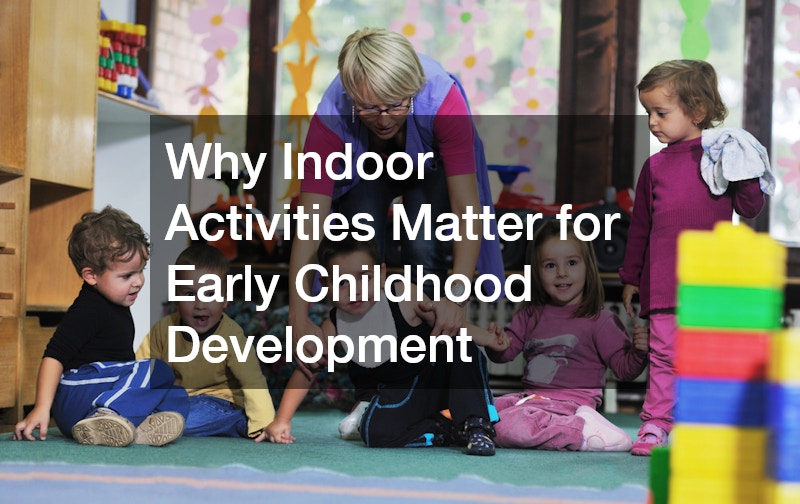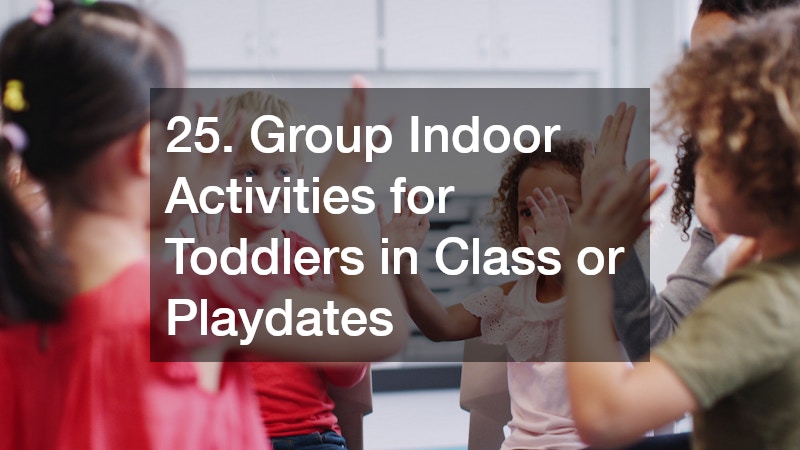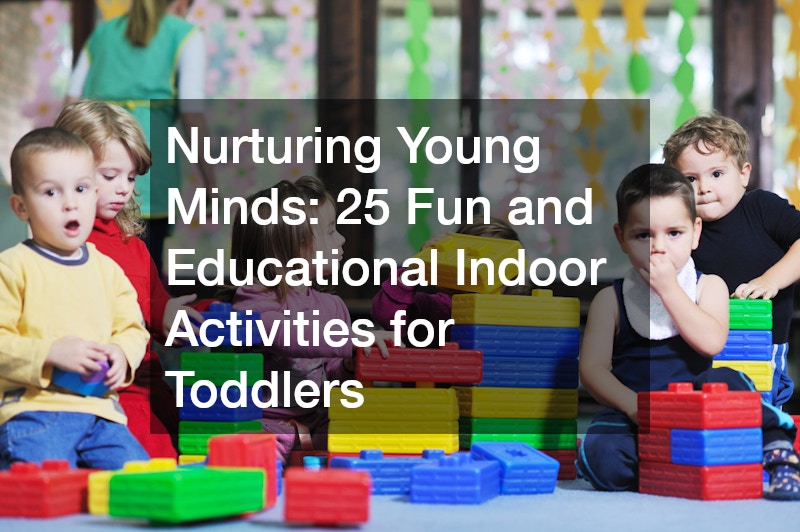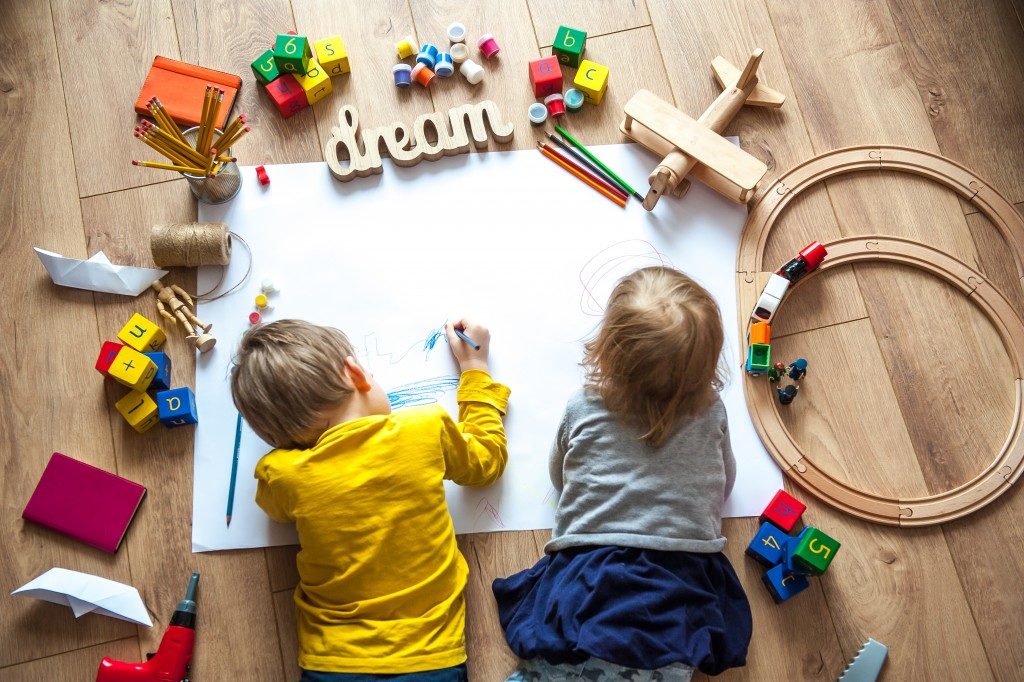Keeping toddlers engaged indoors can be a challenge, especially when their energy levels are high and their attention spans are short. Whether you’re a parent looking to keep your child entertained on a rainy day or a teacher needing quiet-time activities in the classroom, this guide has something for you. Indoor play doesn’t have to be chaotic—it can be fun, educational, and developmentally enriching.
The key is to blend structured activities with opportunities for imaginative exploration. In this article, we’ll explore 25 indoor activities for toddlers that promote physical development, cognitive skills, creativity, and emotional growth—all while keeping the fun alive!
What Makes a Good Indoor Activity for Toddlers?
Before jumping into the list, let’s define what makes an indoor activity truly effective for toddlers. It should be:
- Safe and age-appropriate
- Easy to set up with minimal supervision
- Engaging and stimulating for short attention spans
- Designed to promote learning through play
When these criteria are met, indoor activities become more than just time-fillers—they’re opportunities for growth, discovery, and bonding.
Why Indoor Activities Matter for Early Childhood Development

Indoor activities play a critical role in early development, especially when outdoor play is limited by weather or space. They foster fine motor skills, language development, emotional regulation, and even early literacy and numeracy.
For educators, these activities support learning goals and provide a controlled environment for teaching new concepts. For parents, they can be a lifesaver during long afternoons or quiet time. With that in mind, let’s explore the 25 best options.
1. Sensory Bins for Tactile Exploration
Toddlers love to explore with their hands. Sensory bins offer a safe and creative way to encourage this natural curiosity.
Ideas for Sensory Bins:
- Rice or pasta with small toys
- Water beads and scoops
- Cotton balls and tongs
- Sand with hidden letters or shapes
Developmental Benefits:
- Enhances fine motor skills
- Stimulates the senses
- Introduces early sorting and categorizing concepts
2. DIY Obstacle Courses
Turn your living room or classroom into a mini playground with a DIY obstacle course.
Include:
- Pillows to crawl over
- Chairs to crawl under
- Taped lines for balance walking
- Hula hoops to jump through
Why It Works:
- Promotes gross motor development
- Builds confidence and physical strength
- Provides energy release in a structured setting
3. Indoor Scavenger Hunts
Scavenger hunts are exciting and easy to adapt to different skill levels.
Try themes like:
- Colors (Find something red, blue, etc.)
- Shapes (Find a circle, square, triangle)
- Alphabet (Find items that start with each letter)
This activity sharpens observation skills and vocabulary while encouraging movement and problem-solving.
4. Story Time with a Twist
Reading is essential, but you can make it more interactive by:
- Using puppets or stuffed animals for characters
- Acting out scenes with your toddler
- Asking questions after each page
Pro Tip: Choose books with repetition and rhyme to build memory and language skills.
5. Toddler Yoga and Stretching
Toddlers are naturally flexible and energetic. Yoga helps them slow down and develop focus.
Simple poses:
- Downward dog
- Tree pose
- Butterfly pose
These routines enhance balance, coordination, and body awareness while promoting calmness.
6. Playdough Fun
Homemade or store-bought, playdough is a versatile tool for imaginative play.
Activity ideas:
- Shape recognition
- “Bake” pretend cookies
- Create animals or letters
Playdough strengthens fine motor control and encourages creative thinking.
7. Dress-Up and Pretend Play
Pretend play helps toddlers make sense of the world.
Suggestions:
- Create a “grocery store” with toy food
- Dress up as doctors, chefs, or firefighters
- Use cardboard boxes as props (cars, houses, spaceships)
These activities foster communication, storytelling, and empathy.
8. Sorting Games with Household Items
Turn everyday items into learning tools by sorting:
- Socks by color or size
- Plastic lids by shape
- Blocks by texture
Sorting builds early math skills and helps toddlers understand order and patterns.
9. Matching Card Games
Use flashcards or DIY picture cards for matching games.
Examples:
- Animal pairs
- Shapes and colors
- Everyday objects
Matching enhances memory, concentration, and visual processing.
10. Indoor Bowling
Set up bowling pins using empty water bottles and use a soft ball. Keep score if your toddler is ready for number practice!
Great for hand-eye coordination and basic counting.
11. Painting Without the Mess
Use mess-free techniques like:
- Water painting on construction paper
- Ziplock bags filled with paint for finger-drawing
- Sponge painting with stamps or cut shapes
These encourage creativity without overwhelming cleanup time.
12. Build with Blocks
Wooden blocks, Mega Bloks, or stacking cups can provide hours of entertainment.
Try:
- Tallest tower challenge
- Shape-building (houses, bridges)
- Color sorting during construction
Block play supports problem-solving, balance, and fine motor skills.
13. Indoor Activities for Toddlers That Teach Life Skills
Daily routines can become mini-lessons.
Ideas:
- Fold washcloths together
- Match socks by color
- Wipe tables with a cloth
- Set the table with plastic dishes
These simple chores teach responsibility, sequencing, and independence.
14. Bubble Wrap Stomp
Place bubble wrap on the floor and let toddlers jump or stomp on it.
Fun, safe, and full of sensory feedback—plus, it gets out some of that high energy!
15. Counting Games with Toys
Use favorite toys to teach early counting:
- Line up cars or dolls and count them together
- Add or take away items and count again
- Use snack time as a counting opportunity
This lays the foundation for math skills in a playful setting.
16. Musical Parade
Grab pots, pans, and spoons—or real toy instruments—and create a mini marching band.
Benefits:
- Teaches rhythm and coordination
- Enhances auditory processing
- Supports group play and turn-taking
17. Color Mixing with Safe Paints
Introduce basic color theory using finger paints or food coloring in water cups.
What to do:
- Mix blue and yellow to make green
- Predict what happens when two colors mix
- Try ice cube color mixing for sensory fun
A great way to combine art, science, and curiosity.
18. Tape Maze on the Floor
Create a maze or path on the floor using painter’s tape.
Activities:
- Walk the line
- Drive toy cars through the maze
- Jump from one tape line to another
This is ideal for spatial awareness and movement skills.
19. Sing-Alongs with Movement
Songs with motions help toddlers connect language with action.
Popular choices:
- “Head, Shoulders, Knees, and Toes”
- “If You’re Happy and You Know It”
- “The Wheels on the Bus”
Music and movement stimulate brain development and support language acquisition.
20. Simple Science Experiments
Toddlers are natural scientists. Try easy, safe experiments like:
- Mixing baking soda and vinegar
- Floating vs. sinking objects in water
- Freezing toys in ice and “rescuing” them
Encourages observation, cause-and-effect reasoning, and curiosity.
21. Puppet Shows
Make puppets from socks, paper bags, or felt and put on a mini show together.
Puppet play helps toddlers express emotions, improve language skills, and engage in storytelling.
22. Quiet Time Boxes
Create a box of independent play items for calm moments.
Include:
- Puzzles
- Lacing cards
- Board books
- Felt storyboards
This promotes self-regulation and independent problem-solving.
23. Mirror Play and Facial Expressions
Use a mirror and explore expressions together:
- Happy, sad, surprised faces
- Copycat facial games
- Make silly faces and name emotions
It’s a fantastic way to teach emotional awareness and build social-emotional skills.
24. Educational Apps and Screen Time That Support Learning
While too much screen time can be a concern, carefully selected educational apps can support early learning in a controlled and engaging way. When used with parental guidance or in short intervals, technology can reinforce core skills like literacy, numbers, shapes, and more. Here are a few toddler-approved digital learning activities to explore indoors:
- Endless Alphabet – Introduces new vocabulary with fun animations.
- Busy Shapes – Encourages problem-solving and shape recognition.
- Sago Mini Games – Offers interactive play in safe, kid-friendly environments.
- Musical apps – Help toddlers explore rhythm and pitch through digital instruments.
- Interactive storybook apps – Encourage toddlers to engage with stories through sound and animation.
The key is balance. Aim for 15–30 minutes of supervised screen time using these apps as tools—not babysitters—to support skill-building and spark curiosity.
25. Group Indoor Activities for Toddlers in Class or Playdates

For teachers or parents hosting multiple toddlers, group activities help build early social skills, such as cooperation, patience, and empathy. These group-based indoor ideas are especially useful during playdates, daycare sessions, or circle time.
Try these group-friendly indoor activities:
- Follow the Leader – Encourage imitation of simple movements like clapping, jumping, or turning around.
- Roll and Respond Dice Game – Create a large dice with prompts like “make an animal sound” or “jump three times.”
- Pass the Box – Fill a box with toys or sensory items and pass it around while music plays. When the music stops, the child holding the box picks something out.
- Group singing or dancing circles – Songs like “Ring Around the Rosie” or “Hokey Pokey” are perfect for toddler groups.
- Story Circle – One adult reads a book while toddlers sit in a circle and take turns interacting with parts of the story.
These structured group interactions help toddlers practice taking turns, learn to listen, and develop peer relationships—all essential skills for preschool readiness.
Final Thoughts: Making the Most of Indoor Play
Indoor activities don’t have to be complicated or require expensive supplies. With a little creativity and flexibility, you can turn ordinary household items into meaningful play opportunities. The key is variety—mix sensory play, movement, and learning tasks throughout the day to keep your toddler engaged and growing.
As parents and teachers, the goal isn’t perfection but connection. Use these moments to bond, teach, and make memories. You’re not just entertaining your child—you’re building the foundation for a lifetime of curiosity and learning.



